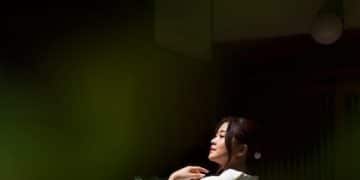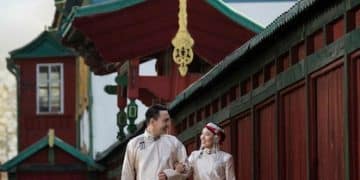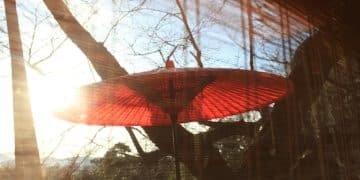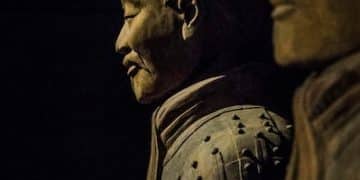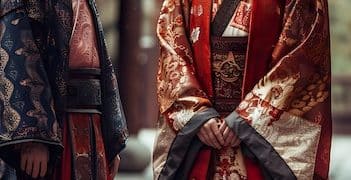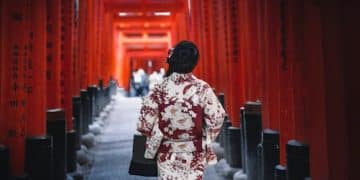Korean Drama Cinematography: A Visual Masterclass
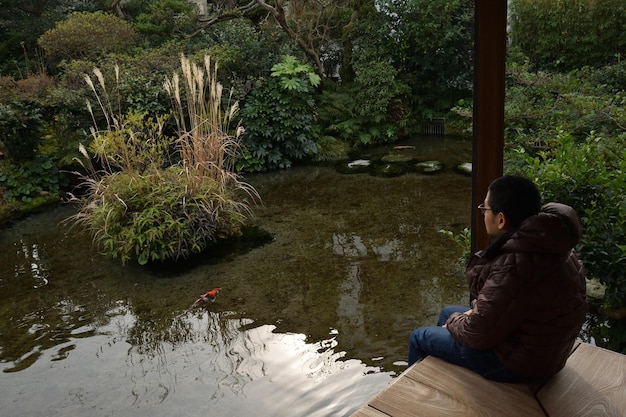
Advertisements
Korean drama cinematography is a visual art form, employing innovative techniques like dynamic camera movements, vibrant color palettes, and symbolic imagery to enhance storytelling and captivate audiences, making K-dramas globally appealing.
Korean dramas, or K-dramas, have captivated audiences worldwide with their compelling stories, engaging characters, and, crucially, their visually stunning presentation. The art of Korean drama cinematography goes beyond simply recording scenes; it’s a deliberate and sophisticated craft that enhances the narrative and evokes deep emotional responses.
Anúncios
The Essence of Visual Storytelling in K-Dramas
The visual storytelling in K-dramas is a key element in their global appeal. Cinematographers meticulously craft each scene to convey emotions, underscore plot points, and immerse viewers in the world of the drama. Understanding the techniques used can greatly enhance appreciation for the art form.
Dynamic Camera Movements
Camera movement is a critical tool in the cinematographer’s arsenal. In K-dramas, dynamic camera movements are employed to create a sense of energy and draw the viewer’s eye to key elements within the frame.
Anúncios
- Smooth Pans: Used to follow characters or reveal expansive landscapes, creating a sense of scale and continuity.
- Tilts: Employed to emphasize the height of buildings or the emotional expressions of actors, adding depth to the scene.
- Dolly Shots: Moving the camera smoothly towards or away from a subject to heighten tension or reveal crucial details.
- Steadicam: Offers fluid movement during scenes where actors move around a location, maintaining stability and visual appeal.
Cinematographers in K-dramas leverage these techniques to guide the audience’s focus and amplify the emotional impact of each scene. These deliberate choices in camera movement are not simply aesthetic; they are integral to the storytelling process.
In conclusion, the dynamic use of camera movements in K-dramas enhances visual storytelling by creating energy, guiding focus, and heightening emotional impact, contributing significantly to the immersive experience.
Color Grading and Palette Choices
Color is a powerful tool in filmmaking, influencing mood and guiding viewers’ perceptions. K-dramas are known for their distinctive color grading, which contributes significantly to their unique visual identity. The strategic use of color palettes helps set the tone and draw viewers into the narrative.
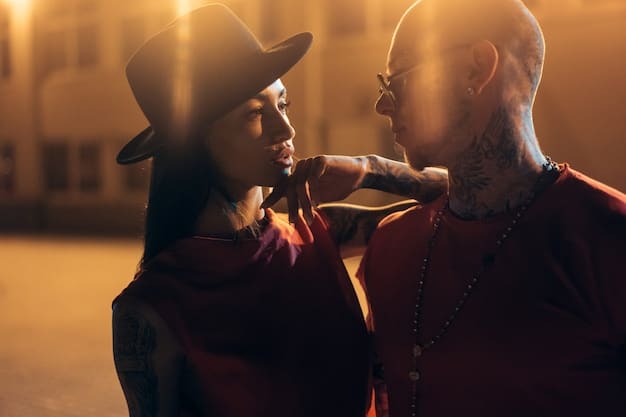
Thematic Color Palettes
Each K-drama often employs a specific color palette that aligns with the drama’s themes. Soft, pastel hues might be used for romantic comedies, while darker, more muted tones are common in thrillers or historical dramas.
For instance, a drama focusing on young love might use a palette of soft pinks, blues, and yellows to evoke feelings of innocence and warmth. Conversely, a suspenseful drama might feature deep blues, grays, and blacks to create a sense of unease and tension.
The impact of well-chosen color palettes is significant, allowing cinematographers to enhance the emotional resonance of the story and create a visually cohesive viewing experience.
In sum, color grading and palette choices significantly influence the mood and visual identity of K-dramas, with thematic color palettes enhancing the emotional resonance of each story.
Composition and Framing Techniques
Composition and framing techniques are vital for creating visually appealing and emotionally resonant scenes. K-dramas often feature meticulously planned compositions that guide the viewer’s eye and enhance the narrative. Effective framing adds visual depth and interest to the story.
Rule of Thirds
One of the most fundamental composition techniques is the “rule of thirds,” dividing the frame into nine equal parts and placing key elements along these lines or at their intersections. This creates a more balanced and engaging composition than simply centering the subject.
Leading Lines
Another powerful technique involves using “leading lines” to draw the viewer’s eye towards a specific point in the frame. These lines can be roads, rivers, fences, or even the arrangement of objects within a scene. Employing leading lines adds depth and creates a sense of direction within the shot.
Symmetry and Asymmetry
Symmetry can create a sense of order and harmony, while asymmetry can introduce tension and visual interest. K-dramas often balance symmetrical and asymmetrical compositions to enhance the emotional impact of scenes.
In conclusion, strategic composition and framing techniques are crucial for creating visually captivating scenes in K-dramas, guiding the viewer and enhancing the emotional resonance of the narrative.
Lighting and Shadow Play
Lighting is a fundamental element of cinematography, shaping the mood and guiding the audience’s focus. K-dramas masterfully use lighting and shadow play to create visually compelling scenes, enhancing the drama and emotions on screen.
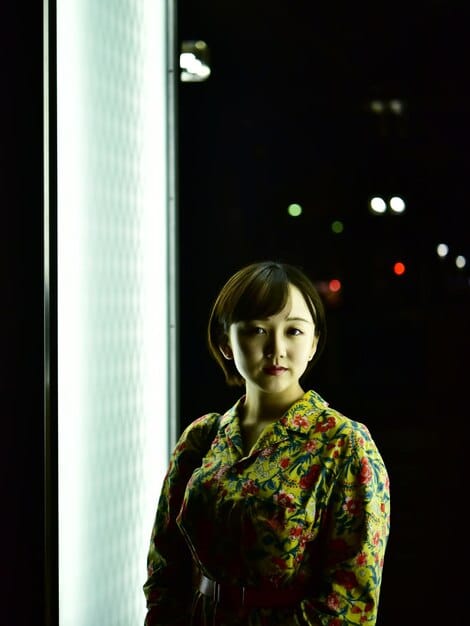
Natural Light vs. Artificial Light
K-dramas often blend natural and artificial lighting to achieve the desired look. Natural light can create a soft, romantic feel, while artificial light allows for more precise control over shadows and highlights.
- Daylight Scenes: Rely on natural sunlight, often softened with diffusers to create a flattering, even light.
- Nighttime Scenes: Use a combination of artificial lights to mimic the look of moonlight or streetlights, adding depth and atmosphere.
- Backlighting: Separates a character from the background and creating a halo effect, adding a sense of mystique or importance.
- Chiaroscuro: Employs stark contrasts between light and shadow to create a dramatic effect, often used in thriller or suspense genres to emphasize tension.
Thoughtful use of lighting and shadows enhances the emotional storytelling and visual appeal of K-dramas, ensuring each scene is visually striking and emotionally resonant.
In brief, the strategic use of lighting and shadow play in K-dramas is instrumental in shaping mood and guiding focus, significantly enhancing the emotional storytelling and visual appeal of the scenes.
Use of Symbolic Imagery
Symbolic imagery adds layers of meaning to the narrative, inviting viewers to engage with the story on a deeper level. K-dramas frequently use symbolic imagery to convey emotions, foreshadow events, and explore complex themes.
Recurring Motifs
Recurring motifs, such as particular objects, colors, or settings, can represent deeper themes within the drama. For example, umbrellas might symbolize protection or vulnerability, depending on the context.
Flowers are another common symbol. Cherry blossoms might signify fleeting beauty or the ephemeral nature of life, while roses could represent passion and romance.
The strategic use of symbolic imagery enriches the viewing experience, encouraging viewers to interpret and reflect on the deeper meanings embedded within the story.
In conclusion, the use of symbolic imagery in K-dramas enriches the narrative by adding layers of meaning, inviting deeper engagement and interpretation from the audience.
Post-Production Techniques
Post-production techniques significantly enhance the visual appeal of K-dramas, refining the raw footage into a polished and engaging final product. Editing, visual effects, and sound design are all key components.
Editing Style
The editing style of K-dramas often involves a combination of fast-paced cuts and longer, more contemplative shots. This creates a dynamic rhythm that keeps viewers engaged while allowing for emotional moments to resonate.
Visual Effects
Visual effects (VFX) are used to enhance realism or add fantastical elements to the story. Subtle VFX can correct imperfections, while more dramatic effects might create elaborate fantasy worlds.
Sound Design
Sound design plays a crucial role in creating atmosphere and enhancing emotional impact. Music, sound effects, and dialogue are carefully mixed to immerse viewers in the world of the drama.
Strategically applied post-production techniques provide the final touches that bring K-dramas to life, enhancing their visual appeal and ensuring a captivating viewing experience.
In sum, post-production techniques in K-dramas refine visual appeal through editing, visual effects, and sound design, ensuring a polished and captivating final product for the audience.
| Key Aspect | Brief Description |
|---|---|
| 🎬 Camera Movements | Dynamic pans, tilts, and dolly shots enhance scenes. |
| 🎨 Color Palettes | Thematic colors set tone and mood. |
| 💡 Lighting Techniques | Natural and artificial light create depth. |
| ✨ Symbolic Imagery | Recurring motifs add deeper meaning. |
Frequently Asked Questions
▼
Cinematography in Korean dramas refers to the art of visual storytelling through camera techniques, lighting, color grading, and composition, creating aesthetically pleasing and emotionally engaging scenes.
▼
Color grading sets the tone and atmosphere by adjusting colors, contrast and saturation. Specific palettes create moods, enhancing emotional resonance and visual appeal in K-dramas.
▼
Lighting shapes the mood, emphasizes details, and guides the viewer’s focus. The use of natural and artificial lighting enriches scenes, adds depth, and enhances dramatic effect within a K-drama.
▼
Camera movements create dynamic visual experiences, guiding attention and building tension. Smooth pans, tilts, and dolly shots amplify emotions, enriching narrative of visual storytelling of K-dramas.
▼
Symbolic imagery adds deeper layers of meaning, inviting viewers to interpret unspoken themes. Recurring motifs using colors, objects, and setting increase deeper engagement, enriching K-drama essence.
Conclusion
In conclusion, the captivating visual appeal of Korean dramas is no accident. It’s the result of meticulous planning, skilled execution, and a deep understanding of cinematic techniques. From dynamic camera movements and thoughtful color grading to symbolic imagery and post-production refinements, every element is carefully crafted to enhance the storytelling and create an unforgettable viewing experience.
